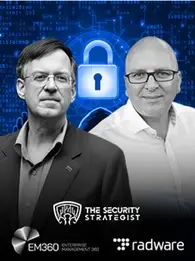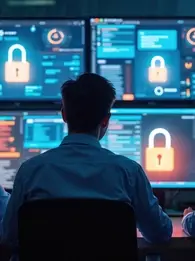
The US election is now underway, leaving voters and spectators alike chewing down to their nail beds. This year is palpably more tense than others, and while a number of factors are to blame for this, perhaps one of the most significant is today's cyberspace. The 2020 election has been marred by mis- and disinformation, polarising opinions and impacting presidential campaigns. In turn, candidates are not only competing with each other – they're competing with an aggressive online world.
Similarly, as the world continues to trudge through COVID-19, we're constantly confronted by contradicting information. From pro-lockdown to anti-lockdown campaigns, to pro-mask wearing versus none at all, the internet is a very divided space to be. Now, the average person is tasked with making decisions based on the information that they have, but when this information is too plentiful and often compromised, it becomes a big and dangerous burden to bear.
The events of this year have posed as a stark reminder of how weaponised cyberspace has become. While organisations attempt to tackle cybercrime and spreaders of dis/misinformation, the onus is now on the general public to be cautious when browsing the internet. Here are some tips and tricks to be mindful of when reading online.
Understanding the difference between misinformation and disinformation
Simply, misinformation is that which is incorrect or false, but not by intent. For instance, sometimes we might retell events and forget or confuse certain details. Such retelling can constitute misinformation because you're spreading a message that is not entirely accurate, despite not having the intention of doing so.
Disinformation, on the other hand, is a deliberate spread of false messaging that is intended to influence opinion and purposefully obscures the truth.
So, not everyone is out to get you, but similarly, not everyone's account of events or opinion can be trusted. (Side note: you must also remember the distinction between opinion and fact. If an opinion piece is posted on a reputable website, it's still not "truth", per se).
Start with the sources
Firstly, are you dealing with a known source? If no, then approach with caution. Look at its URL/extension: .biz is often associated with spam, while others such as .infonet are also questionable. On the other hand, .com and .co.uk sites tend to be safer, but this is not a guarantee.
If the source you're dealing with is known, ask yourself what kind of reputation it has. For instance, is it very politically one-sided? It is trusted? Are any of its contributors known for extreme or controversial views?
In either setting, what you should look for in a platform is balanced, unbiased, and fair reporting.
Don't let your heart rule over your head
Disinformation in particular is engineered to provoke you and make you want to share quickly, overriding the responsibility to fact-check or verify the article. For example, you may see a headline that angers you and you quickly repost, exposing it to your network in which people may choose the same. Of course, headlines are not always what they seem.
For example, a news story once spread with headlines to the tune of "hot tea linked to oesophageal cancer". Upon reading the article, it becomes clear that hot tea is not the culprit; rather, drinking any liquid over a certain temperature may increase risk of cancer. However, if you are a hot tea drinker or know people that are, you may panic-share without properly reading the article. This in turn causes a ripple effect of people panicking about drinking tea, when really, they run the same risk with an extra-hot mocha, mulled wine, and so on.
Thus, people must get into the habit of pausing before sharing or forming an opinion – no matter how provoked they are – and reading between the lines. You should also do some extra research too and check to see whether the information provided corresponds with other outlets.
Be mindful of pictures and videos
Seeing is no longer believing thanks to the manipulation of images, which can be incredibly tricky to spot. Deepfake technology and photo/video editing software often looks perfectly plausible to the eye and can be extremely dangerous. Already, there are widespread concerns about how deepfake technology could be used to disgrace politicians or even manipulate pornographic content by projecting someone else's face onto it.
Poor-quality deepfakes can be easy to spot. Often, the lip syncing is a little bit off, or the merged footage/images are misaligned, or the outline of the main moving object is a little sketchy. What's more, people in deepfakes often appear emotionless or have unnatural expressions, so compare that to the context and consider whether it looks 'right'. Of course, the higher the quality, the harder it becomes to spot, but frankly, you've just got to use your common sense. If a video of the Queen of England emerges saying that Ronald McDonald is next in line to the throne, then you can (probably) assume it's a fake.
Another difficulty with images is when they are intentionally taken out of context. For example, as the UK government urged people to socially distance to mitigate the spread of the coronavirus, pictures quickly began emerging of jam-packed beaches nearer the south of England. However, some Twitter users protested that the images being used were actually from a pre-COVID era, having originated from historical news reports about busy bank holidays.
Luckily, still images are easier to verify. A reverse image search (you can use Google to do this) will tell you where the image originated from and whether it has been edited.
Keep your wits about you
The underlying theme when it comes to any advice on spotting mis/disinformation is to adopt a mindset that is critical of online material. Get into the habit of questioning content and doing extra research or going the extra mile to verify something. A more factual world is a much safer one, and we must all do our bit to ensure we are only perpetuating truthful narratives.













Comments ( 0 )